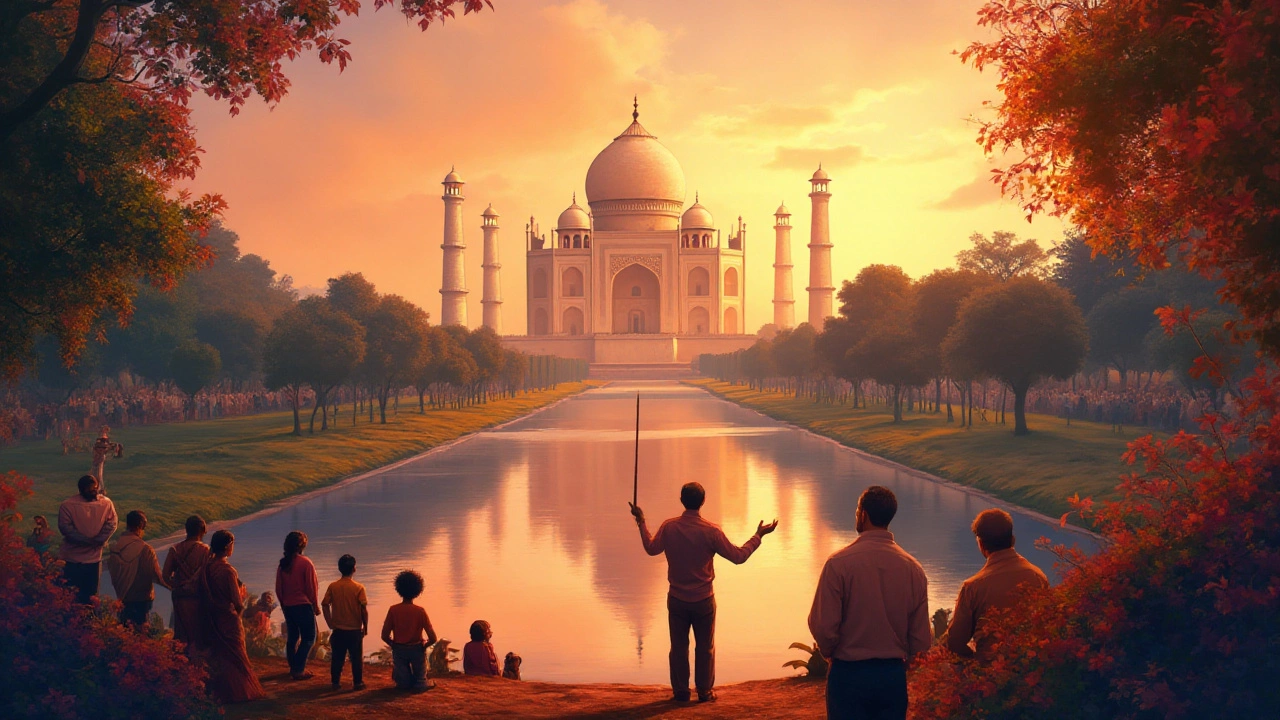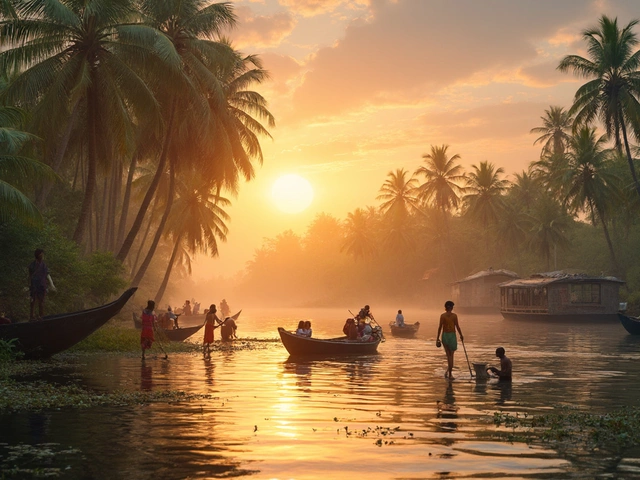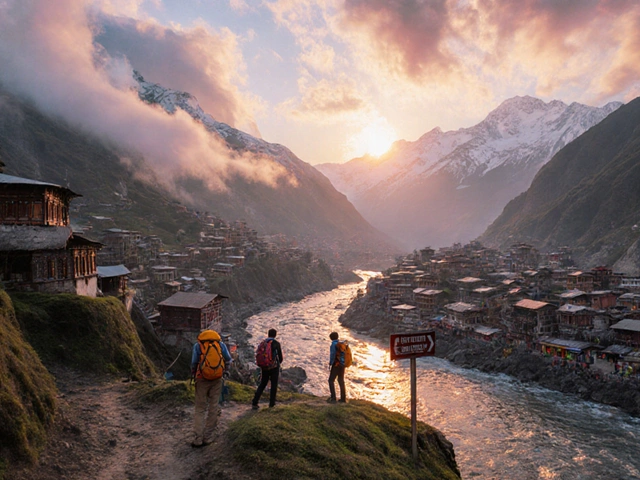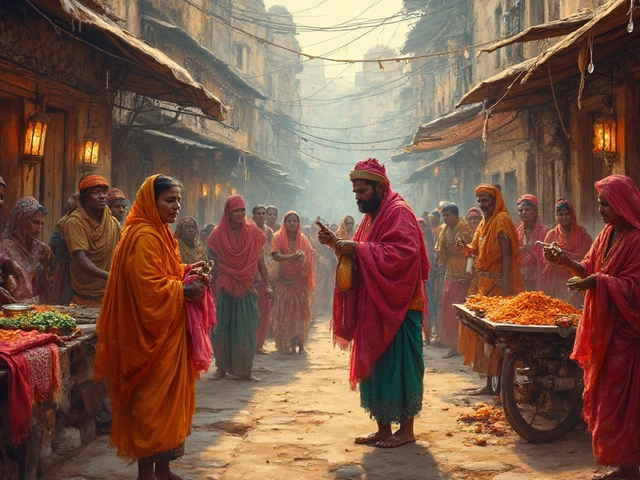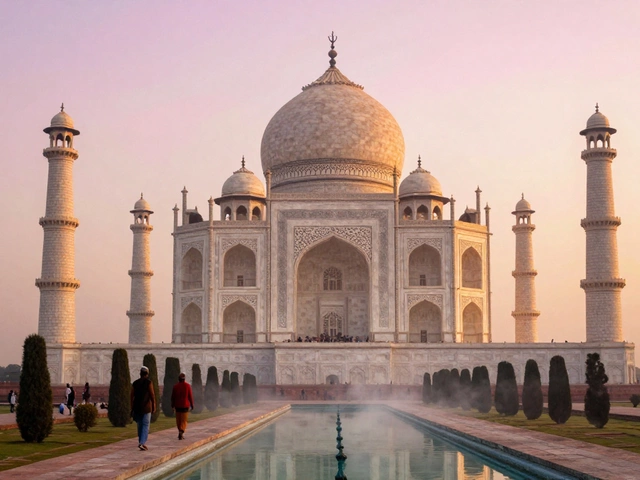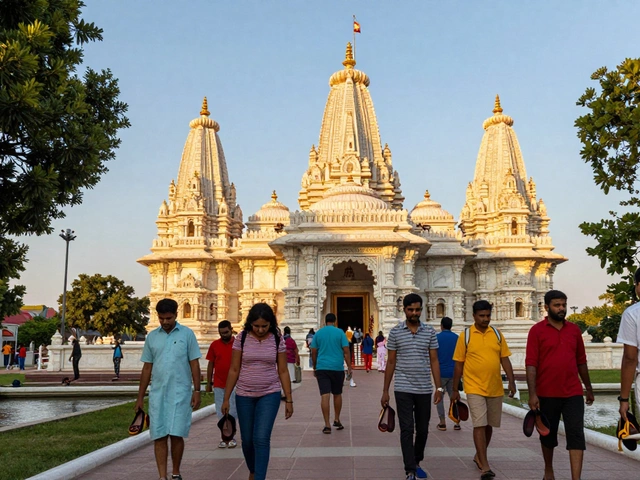Step into India, where ancient stones whisper timeless tales. Heritage sites in this vibrant land are not mere relics; they are the pulse of a civilization rich in history and culture. From the stunning architecture of the Taj Mahal to the mysterious appeal of Ajanta and Ellora caves, these sites connect us to our roots and define our identity.
But have you ever considered their impact beyond their historical allure? Heritage sites are dynamic lifelines, boosting tourism and the economy while simultaneously fostering a sense of identity and continuity. Trekking through these historical marvels is like flipping through the pages of a living, breathing history book.
Join me as we delve deeper, exploring the tangible and intangible value of India's revered heritage sites. We'll uncover their multifaceted importance, the challenges they face, and the ways in which they bridge generations, teaching and inspiring along the way.
- A Glimpse into the Past
- Cultural Significance and Identity
- Economic Impact and Tourism
- Preservation Efforts and Challenges
- Education and Awareness
- Personal Reflection and Connection
A Glimpse into the Past
India's heritage sites are doors to its ancient past, each offering a unique story. These sites transport visitors through time, unveiling chapters of history that are both captivating and enlightening. From the intricate carvings on the walls of the Ajanta and Ellora caves, which date back to as early as the 2nd century BCE, to the majestic forts of Rajasthan, these places are windows into the bygone eras of kings and emperors.
Historical sites like the Indus Valley Civilisation sites of Harappa and Mohenjo-Daro paint a vivid picture of one of the world's oldest urban cultures. It's awe-inspiring to imagine the sophisticated city planning and advanced civil engineering that existed thousands of years ago. In contrast, the spiritual aura at Sarnath, where Buddha delivered his first sermon, speaks volumes about India's rich religious and philosophical heritage.
Monuments of Architectural Brilliance
The architectural splendor of heritage sites like the Sun Temple at Konark and the Brihadeeswarar Temple showcase the zenith of engineering that ancient Indian architects achieved. Each stone in these monumental edifices tells a tale of cultural evolution and artistic expression.
The Silent Testimonies
Many of these heritage sites also serve as silent witnesses to the tumultuous events that have shaped India's history. For instance, the Red Fort in Delhi stands as a symbolic seat of power and the scene of historical events like the Indian independence celebrations in 1947.
India’s passage through various empires and changes is etched into the very stones of these sites, reflecting the emergence of diverse art forms and architectural styles. The assimilation of different cultures and traditions is evident in sites like Fatehpur Sikri, Akbar's forsaken capital, which combines Islamic, Persian, and Indian architectural elements.
Such is the allure of India's heritage sites—where history isn't just recorded but lives on dynamically. For those who visit, these sites hold an unspoken promise: the chance to not just see history, but to experience it.
Cultural Significance and Identity
India's heritage sites are not merely static remnants of a bygone era; they are living repositories that encapsulate the cultural essence of the nation. With a civilization that dates back thousands of years, these sites are testimony to India's rich historical tapestry, reflecting the diverse influences that have shaped its cultural identity.
Take, for instance, the majestic Rajasthan forts. These architectural masterpieces not only stand as fortified structures but tell tales of valor, artistry, and strategic acumen. It's through these grand narratives that India presents a unique blend of narratives from Rajput royalty to Mughal influences.
The Spiritual Connect
Beyond the visual grandeur, sites like Varanasi and the temples of Khajuraho offer profound spiritual experiences. Varanasi, one of the world's oldest cities, captures the cultural spirit of India with its ghats bustling with life and sacred rituals. For the faithful, these places are conduits to the divine, offering solace and connection to spiritual roots.
Festivals and Traditions
Many heritage sites are intrinsic to local traditions and festivals. The vibrant Pushkar Camel Fair, held at the banks of the sacred Pushkar Lake, is a festival that blends vibrant colors, bustling markets, and cultural performances, making it a cultural extravaganza and drawing visitors from all around.
Sites as Custodians of Language and Art
Ancient structures like the Ajanta and Ellora caves are more than historical monuments; they are repositories of ancient art forms and languages. The intricate carvings and paintings of these caves offer insights into Buddhist religious art and illustrate ancient languages like Sanskrit and Prakrit.
These heritage sites help preserve the diverse linguistic tapestry of India, contributing to the cultural plurality that defines the nation. This linguistic and cultural variety sparks curiosity and fosters a deeper understanding among the populace and visitors alike.
The Enduring Identity
The cultural significance of India's heritage sites extends beyond their historical and artistic value. They are bastions of cultural resilience, embodying the spirit of the people who have inhabited these lands. As custodians of cultural expression, these sites ensure that the identity and traditions of diverse communities are celebrated, preserved, and passed on to future generations.
Economic Impact and Tourism
India's heritage sites are not just cultural treasures; they are robust economic engines that significantly contribute to the nation's GDP. Tourism surrounding these sites is a thriving industry, drawing millions of domestic and international visitors each year. In doing so, they generate employment opportunities and stimulate local economies.
Revenue Generation
The revenue flowing from tourism linked to heritage sites is substantial. Entry fees, guided tours, and adjacent hospitality services such as hotels, restaurants, and transportation contribute heavily to local and national coffers. The Taj Mahal alone attracts over seven million visitors annually, with each visitor contributing to a network of businesses and services.
Employment Opportunities
Tourism centered on these historical locations creates vast employment opportunities. From local artisans and guides to hospitality staff and transportation services, the economic ripple effect supports livelihoods and promotes regional development.
Job Creation in Numbers
| Year | Jobs Created (in millions) |
|---|---|
| 2023 | 4.5 |
| 2024 | 4.8 |
| 2025 (Projected) | 5.2 |
Infrastructure Development
The demand for improved infrastructure in areas housing heritage sites has led governments and private sectors to invest in better roads, enhanced public facilities, and improved connectivity. Such investments not only benefit tourists but also local residents, fostering an ecosystem conducive to sustainable growth.
Tourism Promotion Strategies
The Indian government, in collaboration with private sectors, has undertaken numerous initiatives to promote tourism at these sites. Digital platforms are leveraged to provide virtual tours and interactive experiences, while festivals and events are organized to attract global attention. Moreover, the 'Incredible India' campaign regularly highlights these sites' importance, ensuring they remain top of mind for potential tourists worldwide.
The marriage between tourism and heritage sites is not one of mere convenience but a strategic alliance that, if nurtured thoughtfully, can yield significant economic advantages while preserving the rich tapestry of India's historical and cultural narrative.
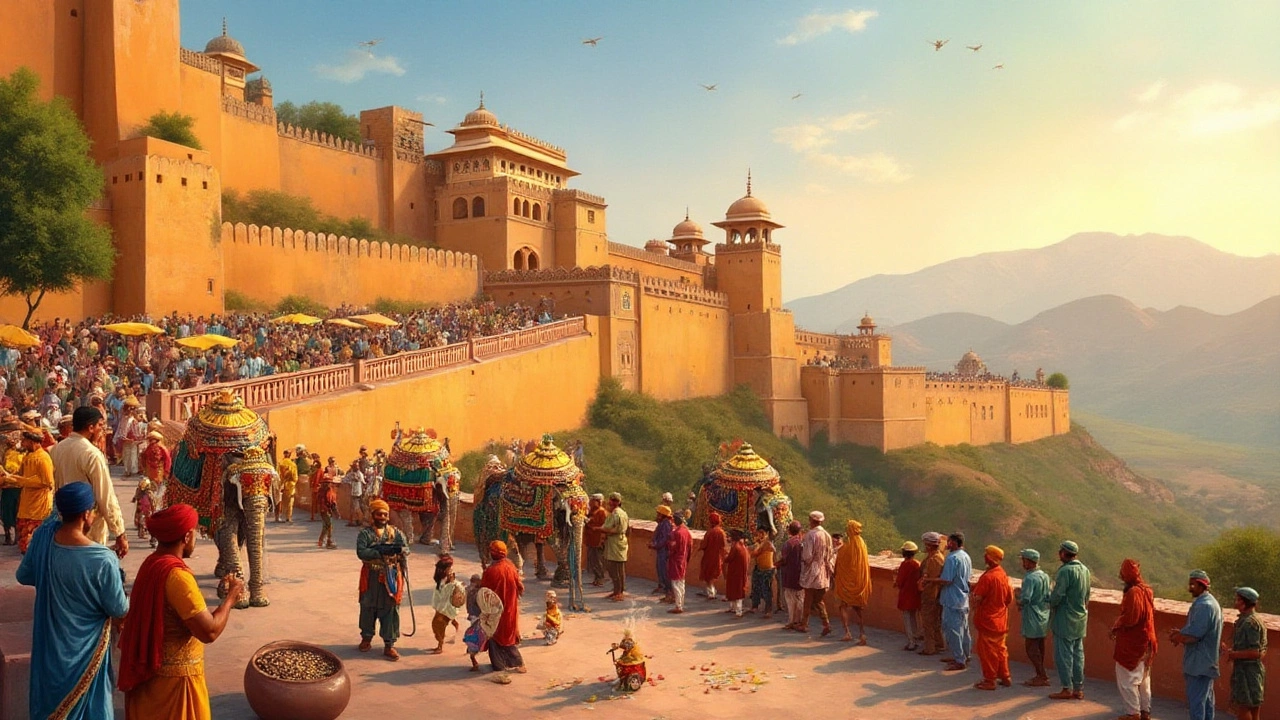
Preservation Efforts and Challenges
Guarding the heritage sites of India is no small feat. The country's vast array of historical treasures is constantly under threat from natural decay, rampant urban development, pollution, as well as the inevitable passage of time. Preservation efforts are crucial, not just for maintaining the integrity of these sites but for safeguarding the cultural fabric they represent.
Historic Preservation Initiatives
The Archaeological Survey of India (ASI), established in 1861, has been at the forefront of conservation work, managing a total of 3,691 ancient monuments across the country. Key initiatives include regular maintenance, structural reinforcement, and restoration projects aimed at returning sites to their original splendor.
Community Engagement and Participation
Efforts have increasingly focused on involving local communities in the cultural preservation process. By doing so, these initiatives foster a sense of ownership and pride, encouraging local guardianship of these invaluable sites. Training programs, workshops, and volunteering opportunities are ways in which residents contribute actively to preservation.
Challenges in Heritage Conservation
Despite these efforts, several challenges persist. Pollution, especially air pollution, has had damaging effects on marble structures, most notably the Taj Mahal. In addition, illegal encroachments and unauthorized construction remain persistent problems, often infringing on the protected areas around these sites.
Another hurdle is the lack of adequate funding and resources. While tourism revenue can be a helpful source, it often falls short of addressing all restorative needs. Furthermore, in the age of digital marvels, capturing the interest and imagination of younger generations remains a challenge for those advocating cultural and historical education.
Collaborative Solutions
Tackling these challenges necessitates collaboration between government bodies, private sectors, and international organizations. UNESCO World Heritage status afforded to several Indian sites plays a crucial role in pooling global understanding and resources. Moreover, technological advances, such as 3D mapping and augmented reality, are beginning to play an essential role in preservation, allowing for sophisticated virtual reconstructions that aid in conservation efforts.
Future Outlook
Moving forward, a sustainable approach to tourism that balances accessibility with conservation is paramount. Policies and practices must evolve to prioritize the long-term health of these historical sites, ensuring that India's rich past continues to thrive and inform for generations to come.
Education and Awareness
The role of heritage sites in educating the masses and raising cultural awareness cannot be overstated. These sites are not merely stone and mortar; they are living classrooms that provide tangible connections to history and tradition. In a country as diverse as India, heritage sites offer invaluable lessons about different cultures, dynasties, and historical events, from the Indus Valley Civilization to the achievements of the Mughal era.
Interactive Educational Experiences
Many heritage sites in India, such as the ruins of Hampi or the ornate palaces of Mysore, offer interactive tours and workshops. These programs are designed to engage both students and the public, allowing them to learn through experience. Children and adults alike can partake in guided tours that explain the significance of architectural features, historical context, and cultural practices associated with these landmarks.
Some heritage sites go a step further by incorporating technology to enhance learning. Augmented Reality (AR) apps can transport users back in time, offering a glimpse of what life might have been like when these sites were at their peak.
Cultural Awareness Through Heritage
Beyond formal education, heritage sites foster a deeper understanding of cultural diversity. By visiting the ancient city of Varanasi or the echoing corridors of the Qutub Minar, visitors are prompted to reflect upon India's pluralistic society. This cultural awareness is crucial for promoting tolerance and appreciation among different communities.
The Role of Schools and Universities
Educational institutions have recognized the importance of studying heritage sites. Field trips to significant landmarks are common in the school curriculum, often accompanied by assignments that encourage students to explore various historical aspects and their impact on contemporary society.
Universities have begun to offer specialized courses focusing on heritage conservation and management. These programs are essential for training the next generation of historians, archaeologists, and conservationists who will carry the torch of preservation forward.
Campaigns and Initiatives
Several government and non-governmental initiatives aim to promote awareness about India's heritage sites. The 'Adopt a Heritage' campaign, for instance, calls upon the public and private organizations to help in the upkeep and promotion of these sites, emphasizing their educational and cultural significance.
| Year | Number of Heritage Site Educational Visits |
|---|---|
| 2020 | 5.3 Million |
| 2021 | 6.1 Million |
| 2022 | 7.5 Million |
As these efforts gain momentum, they serve to spread a message about the vital role that heritage sites play in shaping and informing society, ensuring that their stories are passed down to future generations.
Personal Reflection and Connection
Wandering through a heritage site in India is more than an intellectual pursuit; it's an emotional odyssey that taps into our shared human experience. These sites often serve as mirrors reflecting our familial and cultural narratives. Many visitors, both domestic and international, find themselves not just observing these historical marvels but becoming a part of their enduring tapestry.
Sense of Belonging
Picture yourself standing amidst the majestic corridors of the Red Fort or savoring the intricate carvings of Khajuraho. It's hard not to feel a deep-seated connection to those who walked these pathways centuries ago. Indians, in particular, often experience a sense of pride and belonging at these sites. The feeling is akin to reconnecting with a long-lost friend whose roots intertwine deeply with your own.
Personal Stories and Anecdotes
Many visitors weave personal narratives around their experiences. Take, for instance, the story of an elderly man who, upon visiting the historic city of Hampi, reminisced about childhood tales of heroics and valor that he had grown up hearing. For him and many others, these sites are touchstones that reignite cherished memories, offering a chance to pass down stories to younger generations.
Emotional Resonance with Global Influence
For international travelers, India's heritage sites offer a gateway into an ancient world that has long fascinated historians and archaeologists alike. They come seeking the colors, the chaos, the tales enshrined in stone, and often leave with much more—an indelible connection to a culture that, while vastly different from their own, resonates on profound levels.
| Site | Visitors Annually |
|---|---|
| Taj Mahal | 7-8 million |
| Red Fort | 2.5 million |
| Qutub Minar | 3 million |
These feelings and stories underline the critical role these sites play not just in preserving history but in nurturing personal and cultural identity. Whether you're gazing at the monolithic statues in Ellora or walking through the serene gardens of Humayun's Tomb, these experiences bridge the gap between past and present, offering both solace and inspiration.
Preserving These Connections
As we reflect on our personal connections to these historic treasures, the urgency of their preservation becomes unmistakable. The responsibility to protect these connections lies not only in governmental hands but in ours, ensuring that future generations can experience the same emotional bonds and revelations, keeping the legacy of India's heritage sites alive for centuries to come.
